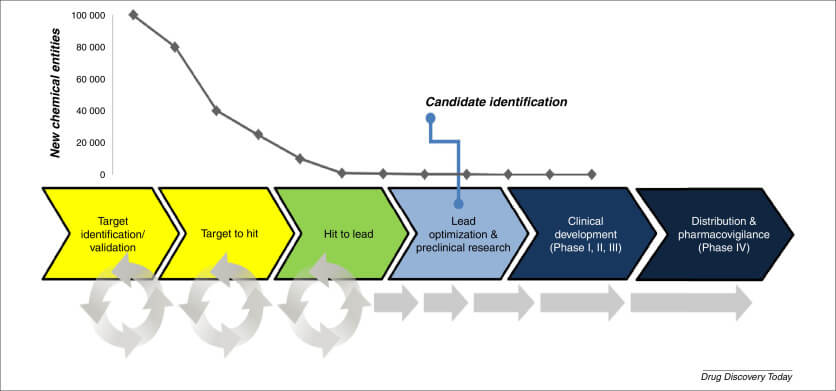Pharmaceutical companies are increasingly recognizing the limitations of relying on expensive and often delayed third-party analysts for business intelligence. This shift comes as platforms like DrugPatentWatch and other specialized data services provide direct access to raw pharmaceutical data, enabling faster decision-making and more targeted strategic planning. The transformation represents a fundamental change in how biopharma organizations approach market intelligence, competitive analysis, and R&D prioritization.
The Limitations of Traditional Pharmaceutical Analysis
Traditional pharmaceutical business intelligence has historically relied on specialized analysts and consulting firms that process and interpret industry data before delivering insights to pharmaceutical companies. This approach presents several significant challenges that increasingly impact competitive positioning in today’s fast-moving market landscape.
The conventional analyst-mediated model introduces inherent delays between data generation and delivery of actionable insights. In an industry where patent expirations, litigation updates, and market entry opportunities represent time-sensitive decision points, these delays can result in missed opportunities. Additionally, third-party analysts typically charge premium rates for their specialized knowledge and processing capabilities, creating significant ongoing expenses for pharmaceutical companies seeking comprehensive market intelligence. The situation is further complicated by the potential for interpretation errors or analytical oversights when raw data passes through multiple hands before reaching decision-makers.
The impact of these limitations becomes particularly evident in scenarios like prescription abandonment, where real-time insights could dramatically improve outcomes. According to a Wolters Kluwer Pharma Solutions analysis, prescription abandonment increased by 34 percent between 2006 and 2008, representing significant lost revenue across therapeutic areas4. Traditional analytical approaches often fail to provide the granular, physician-level insights needed to address this problem effectively, particularly when abandonment patterns vary unexpectedly by geography and therapeutic class4.
Data Quality and Integration Challenges
Beyond timing and cost issues, pharmaceutical companies face significant challenges with data quality and integration when relying on pre-processed analytics. Traditional analysts often work with siloed datasets that fail to capture the complete picture needed for strategic decision-making.
The problem extends to data integrity considerations, where regulatory frameworks require clear identification of raw data used in quality decisions. European Union GMP guidelines specifically note that “records include the raw data which is used to generate other records” and emphasize that “all data on which quality decisions are based should be defined as raw data”5. When working through analysts rather than accessing source data directly, pharmaceutical companies may struggle to maintain this clear provenance of information for regulatory purposes.
The Emergence of Direct Data Platforms in Biopharma
The evolution of specialized platforms like DrugPatentWatch represents a transformative approach to pharmaceutical business intelligence. These platforms provide direct access to raw industry data, enabling companies to conduct their own analyses tuned to their specific strategic needs.
DrugPatentWatch specifically offers constantly-updated insights on drug patent expiration, generic entry opportunities, and critical litigation updates1. This direct access model helps companies identify invalidity opportunities, anticipate generic entry windows, and navigate patent roadblocks more efficiently than through traditional analytical intermediaries1. The platform’s approach aligns with broader business intelligence trends in pharma that combine business analytics, data mining, data visualization, and infrastructure to help organizations make more data-driven decisions2.
Leveraging AI and Advanced Analytics
The integration of artificial intelligence and advanced analytics has significantly enhanced the value proposition of direct data platforms. Modern systems like DrugPatentWatch incorporate AI-powered insights that enable pharmaceutical companies to explore multiple strategic angles simultaneously1. This capability is particularly valuable given the complexity of pharmaceutical market dynamics and the multiple factors influencing strategic decisions.
However, as Within3 CEO Lance Hill notes, “AI is not a strategy. It’s how you do things…The strategy is to affect some business result or change that you are dealing with”2. This perspective highlights the importance of viewing direct data platforms not merely as technological solutions but as enablers of more effective business strategies and decision-making processes.
Case Studies of Successful Transitions
Several major pharmaceutical organizations have successfully transitioned from reliance on traditional analysts to direct data platform approaches, yielding quantifiable benefits in productivity, decision quality, and cost efficiency.
Pfizer’s Integrated Data Platform Implementation
Pfizer’s implementation of a comprehensive data platform represents a noteworthy example of this transition. According to Sergio Rotstein, Ph.D., Director of Research Business Technology at Pfizer, process coverage was a critical consideration in their platform selection. “We required that the full diversity of Pfizer’s large-molecule processes and technologies be supported by one integrated system,” Rotstein explained3. This emphasis on comprehensive coverage highlights the importance of selecting platforms that can address the full spectrum of a pharmaceutical company’s data needs rather than relying on fragmented analytical services.
Productivity Gains at AstraZeneca
AstraZeneca’s experience with direct data platforms demonstrates the quantifiable productivity improvements possible through this approach. As Steve Rees, Vice President of Discovery Biology and Discovery Sciences, reported: “During our initial deployment, we recorded quantifiable increases in productivity. The number of results posted to our data warehouse more than doubled, indicating that we could capture results from many more experiments, while the cost of running day-to-day operations decreased”3. This combination of increased data throughput and reduced operational costs presents a compelling case for the return on investment possible through direct data platforms.
Multi-Site Coordination at Roche
For pharmaceutical companies operating across multiple research sites, coordinating data and analytics presents particular challenges. Professor Hanno Langen, Head of Protein and Metabolite Technologies at Roche, noted that their implementation provided “automated, workflow-based processing and powerful visualizations—all of which enables our high-quality biomarker identification process”3. The ability to integrate diverse data types while providing unified visualization and analysis capabilities across sites represents a significant advantage over traditional analyst-mediated approaches.
Implementation Guidance for Biopharma Companies
Transitioning from reliance on traditional analysts to direct data platforms requires careful planning and strategic implementation. Organizations must consider several key factors to ensure successful adoption and maximize the value of their investment.
Defining Critical Data Requirements
Before selecting a platform like DrugPatentWatch, pharmaceutical companies should clearly define their critical data requirements across clinical R&D, commercial operations, and medical affairs. Effective business intelligence in pharma should address key questions in these areas, including whether therapies in development are targeting the right patient populations, whether key opinion leader engagement is optimized, and whether market entry strategies are properly informed by patent and competitive intelligence2.
The importance of properly defining raw data requirements extends beyond operational efficiency to regulatory compliance. As noted in EU GMP Chapter 4, “For electronic records regulated users should define which data are to be used as raw data”5. Companies must ensure that their direct data platforms provide access to all data elements necessary for quality decisions while maintaining appropriate data integrity controls.
Addressing Data Integration Challenges
One of the most significant challenges in implementing direct data platforms is integrating diverse data sources into a cohesive analytical framework. Hisham Hamadeh, Ph.D., Vice President and Global Head of Data Sciences at a major pharmaceutical company, described their implementation goal as creating “a central integrated data backbone to streamline the capture, integration, democratization, and analysis of increasingly complex and diverse data types”3.
Successful integration requires not only technical capabilities but also clear data governance structures that ensure data quality, consistency, and appropriate access controls. Companies should establish cross-functional teams to oversee data integration efforts and develop clear data standards and protocols for managing information across the organization.
Building Internal Analytical Capabilities
Moving from external analysts to direct data platforms necessitates building internal analytical capabilities to extract maximum value from raw data. Organizations must invest in training programs to develop data literacy among both technical and non-technical staff, ensuring that insights derived from platforms like DrugPatentWatch can be effectively translated into strategic decisions.
The development of internal analytical capabilities should be viewed as an iterative process, with initial focus on high-priority use cases that can demonstrate clear value. As team members become more proficient in working with direct data, organizations can gradually expand the scope of their analytical activities and tackle increasingly complex strategic questions.
Data Integrity and Regulatory Considerations
When implementing direct data platforms, pharmaceutical companies must address important regulatory considerations regarding data integrity and compliance with GMP requirements.
Harmonizing Raw Data and Complete Data Approaches
The pharmaceutical regulatory landscape includes somewhat divergent terminology regarding data requirements, with EU GMP using the term “raw data” while US GMP refers to “complete data”5. Despite this difference in terminology, both regulatory frameworks emphasize the importance of maintaining complete and accurate records that support quality decisions.
Companies implementing direct data platforms should establish clear policies defining which data elements constitute raw data for regulatory purposes and ensure that their systems maintain appropriate audit trails and data provenance information. This clarity is particularly important when making critical business decisions based on patent expiration data, litigation information, or market entry opportunities identified through platforms like DrugPatentWatch.
Ensuring Data Accuracy and Completeness
Data accuracy and completeness are paramount concerns when transitioning to direct data platforms. Organizations must implement appropriate validation procedures to verify the accuracy of data obtained through these platforms, particularly when using this information to inform strategic business decisions.
The concept of data completeness extends beyond simply having all required data elements to ensuring that data is presented with appropriate context for decision-making. This consideration is particularly relevant when addressing complex challenges like prescription abandonment, where understanding patient sensitivity to pricing across different geographies and therapeutic classes requires nuanced analysis rather than simplistic assumptions about the relationship between copays and abandonment rates4.
Maximizing ROI Through Strategic Data Utilization
The ultimate success of transitioning from traditional analysts to direct data platforms depends on an organization’s ability to translate raw data into strategic insights and actions. Companies must develop clear processes for converting data-driven insights into concrete business initiatives.
Targeting Market Opportunities Through Patent Intelligence
One of the primary benefits of platforms like DrugPatentWatch is the ability to identify market opportunities through patent intelligence. By tracking patent expirations, identifying vulnerabilities, and discovering new market entry points, pharmaceutical companies can outpace competitors and strategically allocate resources to high-potential areas1.
Effective utilization of patent intelligence requires cross-functional collaboration between legal, R&D, and commercial teams. Organizations should establish regular review processes to evaluate patent landscape changes and adjust strategic plans accordingly, ensuring that insights derived from direct data platforms directly influence business decisions.
Optimizing Resource Allocation Through Competitive Intelligence
Direct access to competitive intelligence enables more effective resource allocation across research, development, and commercial activities. By monitoring ongoing patent disputes and litigation, companies can anticipate early generic entry opportunities and adjust their market strategies accordingly1.
This capability is particularly valuable in today’s pharmaceutical landscape, where increasing pricing pressures and patient abandonment rates necessitate more sophisticated approaches to market planning and patient support. As the Wolters Kluwer analysis demonstrated, assumptions about patient behavior—such as the relationship between copays and reversal rates—often prove inaccurate when tested against comprehensive data4.
Conclusion
The transition from reliance on traditional pharmaceutical analysts to direct data platforms represents a significant opportunity for biopharma companies to enhance decision quality, reduce costs, and accelerate strategic responses to market changes. Platforms like DrugPatentWatch provide immediate access to critical intelligence on patent expirations, litigation, and market opportunities, enabling more timely and targeted decision-making.
Successful implementation requires careful attention to data requirements, integration challenges, and internal analytical capabilities. Organizations must also address regulatory considerations around data integrity and establish clear processes for translating data insights into strategic actions. By approaching this transition thoughtfully and systematically, pharmaceutical companies can transform their approach to business intelligence and position themselves for sustained competitive advantage in an increasingly complex and fast-moving industry landscape.
The experiences of companies like Pfizer, AstraZeneca, and Roche demonstrate the quantifiable benefits possible through this approach, including increased productivity, reduced operational costs, and enhanced decision quality. As the pharmaceutical industry continues to face pricing pressures, regulatory challenges, and changing patient behaviors, the ability to extract actionable insights directly from raw data will become increasingly critical to business success.
Citations:
- https://www.greyb.com/services/patent-search/drug-patent-watch/
- https://within3.com/blog/business-intelligence-pharma
- https://www.genedata.com/platform
- https://www.pharmexec.com/view/reckless-abandonment
- https://www.chromatographyonline.com/view/data-integrity-focus-part-iv-are-raw-data-and-complete-data-same
- https://pharmasug.org/proceedings/2017/PO/PharmaSUG-2017-PO06.pdf
- https://insights.axtria.com/hubfs/Case-Studies/Axtria-Insights-CS-Unlocking-Performance-Gains-With-Commercial-Data-Management-for-Top-Pharma.pdf
- https://www.drugpatentwatch.com/blog/leveraging-patent-pending-data-for-pharmaceuticals/
- https://www.drugpatentwatch.com/blog/innovative-approaches-to-generic-drug-development-case-studies/
- https://www.wynenterprise.com/blogs/the-top-benefits-of-business-intelligence-bi-for-the-pharmaceutical-industry
- https://www.elucidata.io/blog/the-role-of-ai-ready-data-in-multi-modal-analysis-and-decision-making
- https://www.mckinsey.com/industries/life-sciences/our-insights/real-world-data-quality-what-are-the-opportunities-and-challenges
- https://rtslabs.com/case-studies/data-case-study-2
- https://www.greyb.com/blog/patent-monitoring-services/
- https://www.lachmanconsultants.com/2023/12/the-raw-facts-about-raw-data/
- https://binariks.com/blog/business-intelligence-pharma-use-cases/
- https://sites.uclawsf.edu/evergreensearch/about/
- https://www.linkedin.com/pulse/power-data-visualization-pharma-turning-fto1f
- https://mosaicsg.com/blog/pharmaceutical-data-warehousing-cutting-costs-boosting/
- https://www.drugpatentwatch.com
- https://pmc.ncbi.nlm.nih.gov/articles/PMC11677551/
- https://astrixinc.com/blog/fda-guidance-for-data-integrity/
- https://www.greyb.com/case-studies/
- https://www.linkedin.com/pulse/role-business-intelligence-pharma-manufacturing-zntuc
- https://www.tetrascience.com/blog/part-2-why-biopharma-needs-and-end-to-end-purpose-built-platform-for-r-d-data
- https://www.annexushealth.com/prescription-abandonment/
- https://www.fda.gov/media/75866/download
- https://biopharmaapac.com/analysis/60/5727/25-high-value-drugs-losing-patent-protection-in-2025-what-it-means-for-healthcare.html
- https://frameworkltc.com/blog-posts/the-pivotal-role-of-data-in-business-intelligence-and-artificial-intelligence-in-pharmacy
- https://pluto.bio/solutions/pharma
- https://phrma.org/blog/69-percent-of-patients-abandon-medicines-when-cost-sharing-is-more-than-250
- https://www.fda.gov/files/drugs/published/Data-Integrity-and-Compliance-With-Current-Good-Manufacturing-Practice-Guidance-for-Industry.pdf
- https://www.pharmtech.com/view/defining-and-managing-raw-manufacturing-data
- https://datakitchen.io/large-pharma-achieves-5x-productivity-gain-with-dataops-process-hub/
- https://www.raps.org/news-and-articles/news-articles/2014/5/fda-warning-letter-to-sun-pharma-finds-trash-bags
- https://www.polestarllp.com/blog/analytics-in-pharmaceutical-companies
- https://www.forbes.com/councils/forbestechcouncil/2025/03/26/why-phds-data-analysts-and-euro-businesses-can-all-stop-fretting-about-their-ai-future/
- https://globalforum.diaglobal.org/issue/august-2024/elevating-quality-management-through-analytics-strategies-case-studies-and-application-in-pharmaceutical-organizations-part-1-the-intersection-of-analytics-and-quality-management/
- https://www.science.org/content/blog-post/data-raw-and-otherwise
- https://ispe.org/pharmaceutical-engineering/ispeak/pharma-40tm-case-studies-and-lessons-learned
- https://statmodeling.stat.columbia.edu/2017/08/21/publish-raw-data-speculations-let-people-analysis-track-field-edition/
- https://www.simform.com/case-studies/digital-platform-intelligence-reports-for-pharma-industry/
- https://projectbinder.eu/predict-failures-in-pharma-manufacturing-with-data-analytics/
- https://phrma.org/blog/biden-administration-report-debunks-myths-around-patents
- https://www.linkedin.com/posts/drugpatentwatch_unlocking-the-potential-of-abandoned-and-activity-7257768340180414467-gfwZ
- https://www.pharma-dept.gov.in/sites/default/files/FINAL-An%20analysis%20on%20leveraging%20the%20patent%20cliff.pdf
- https://www.research.psu.edu/sites/default/files/SciVal%20User%20Guide.pdf
- https://www.canadiancentreforhealtheconomics.ca/wp-content/uploads/2022/11/Wang-2022.pdf
- https://www.ftc.gov/sites/default/files/documents/reports/generic-drug-entry-prior-patent-expiration-ftc-study/genericdrugstudy_0.pdf
























